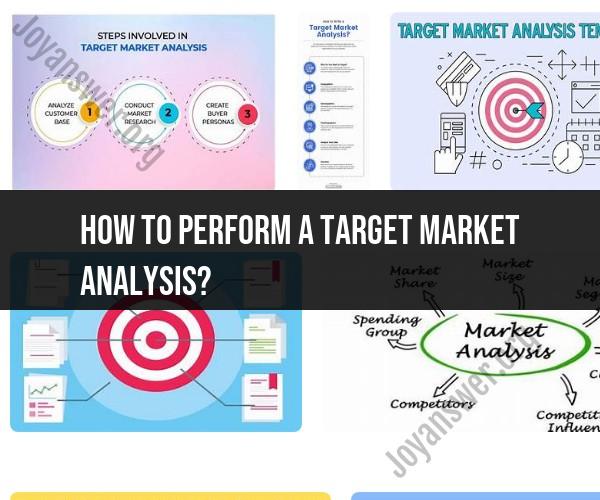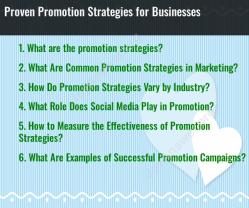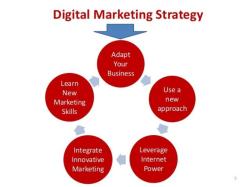How to perform a target market analysis?
Performing a target market analysis is a crucial step in developing a successful marketing strategy for your business. It involves identifying and understanding your ideal customers, their needs, preferences, and behaviors. Here are the steps and guidelines to perform a target market analysis effectively:
Define Your Business Objectives:
- Start by clarifying your business goals and objectives. What do you want to achieve with your target market analysis? Are you looking to expand your customer base, launch a new product, or improve your marketing efforts?
Identify Your Current Customers:
- Begin with an analysis of your existing customer base. Gather data on who is currently buying your products or services. Look at demographics (age, gender, location), psychographics (lifestyle, values, interests), and buying behavior.
Segment Your Market:
- Divide your target market into smaller segments based on shared characteristics. These segments can include demographic, geographic, psychographic, and behavioral factors. For example, you might segment by age group, income level, or purchasing habits.
Research Your Competitors:
- Analyze your competitors to understand their target markets. Who are they attracting, and what strategies are they using? This can help you identify gaps or opportunities in the market.
Create Buyer Personas:
- Develop detailed buyer personas for your ideal customers within each segment. A buyer persona is a semi-fictional representation of your ideal customer, including their demographics, preferences, pain points, and goals.
Conduct Market Research:
- Use both primary and secondary research methods to gather information about your target market. Primary research involves collecting data directly from your audience through surveys, interviews, or focus groups. Secondary research involves using existing sources like industry reports, government data, and competitor analysis.
Analyze Market Trends:
- Stay updated on market trends and shifts that could affect your target audience. Look for changes in consumer behavior, emerging technologies, and cultural shifts that could impact your business.
Assess Needs and Pain Points:
- Understand the needs, challenges, and pain points of your target customers. What problems are they trying to solve, and how can your product or service address those issues?
Evaluate Market Size and Growth Potential:
- Estimate the size of your target market and its growth potential. This information can help you assess the market's attractiveness and long-term viability.
Identify Unique Selling Proposition (USP):
- Determine what sets your business apart from competitors and why customers should choose your products or services. Your USP should align with the needs and preferences of your target market.
Select Target Segments:
- Based on your research and analysis, choose the specific market segments you want to focus on. Consider factors like segment size, growth potential, and alignment with your business goals.
Test and Refine:
- As you implement your marketing strategies, continuously gather feedback and data. Use this information to refine your understanding of your target market and adjust your strategies accordingly.
Create Tailored Marketing Strategies:
- Develop marketing campaigns and messaging that resonate with each target segment. Customize your marketing efforts to address the unique needs and preferences of each group.
Monitor and Measure:
- Implement key performance indicators (KPIs) to track the success of your marketing strategies within each target segment. Regularly monitor your progress and make adjustments as needed.
Iterate and Adapt:
- Market conditions and consumer preferences can change over time. Stay agile and be prepared to adapt your target market analysis and strategies as necessary to remain competitive.
A well-executed target market analysis enables you to focus your marketing efforts on the customers most likely to engage with your business, resulting in more effective and efficient marketing campaigns and improved overall business performance.
Mastering the Art of Performing a Target Market Analysis
A target market analysis is a process of identifying and understanding the ideal customers for your product or service. It involves gathering and analyzing data about the market, including the target market's needs, wants, demographics, and behaviors.
To perform a target market analysis, you can follow these steps:
- Define your business goals. What do you want to achieve with your business? Once you know your goals, you can start to identify the target market that is most likely to help you achieve them.
- Research the market. Gather data about the market, including the industry trends, competitive landscape, and target market demographics. You can use a variety of resources to conduct your research, such as industry reports, government statistics, and social media.
- Identify your target market. Once you have a good understanding of the market, you can start to identify your target market. This is the group of people that you believe are most likely to be interested in your product or service.
- Analyze your target market. Once you have identified your target market, you need to analyze them in more detail. This includes understanding their needs, wants, demographics, and behaviors.
- Develop a marketing strategy. Based on your target market analysis, you can develop a marketing strategy that is tailored to your ideal customers. This strategy should focus on reaching your target market in the right places with the right message.
Identifying and Understanding Your Ideal Customer Base
Your ideal customer base is the group of people that are most likely to be interested in your product or service and who are also most likely to purchase from you.
To identify and understand your ideal customer base, you can ask yourself the following questions:
- Who are my current customers? What are their demographics, needs, and wants?
- What are the pain points that my product or service solves? Who is most likely to experience these pain points?
- Where do my ideal customers spend their time online and offline?
- What kind of content do my ideal customers consume?
- What are the social media platforms that my ideal customers use?
Once you have a good understanding of your ideal customer base, you can start to develop marketing strategies that are tailored to their specific needs and interests.
Tailoring Your Marketing Strategy with Target Market Insights
Once you have a good understanding of your target market, you can start to tailor your marketing strategy to their specific needs and interests. This includes:
- Creating targeted content: Create content that is relevant to your target market's needs and interests. This content can be in the form of blog posts, articles, videos, infographics, or social media posts.
- Choosing the right marketing channels: Advertise on the marketing channels that your target market is most likely to use. This could include social media, search engines, or industry publications.
- Using the right messaging: Use messaging that resonates with your target market. This messaging should focus on the benefits of your product or service and how it can solve their pain points.
By tailoring your marketing strategy to your target market, you can reach more potential customers and increase your chances of success.
Here are some additional tips for tailoring your marketing strategy with target market insights:
- Use segmentation. Segment your target market into smaller groups based on their shared characteristics. This will help you to tailor your marketing messages to each segment more effectively.
- Personalize your marketing. Personalize your marketing messages by using the customer's name and other relevant information. This will make your marketing more relevant and engaging to the customer.
- Use data to measure your results. Track the results of your marketing campaigns to see what is working and what is not. This data will help you to refine your marketing strategy over time.
By following these tips, you can tailor your marketing strategy to your target market and increase your chances of success.












